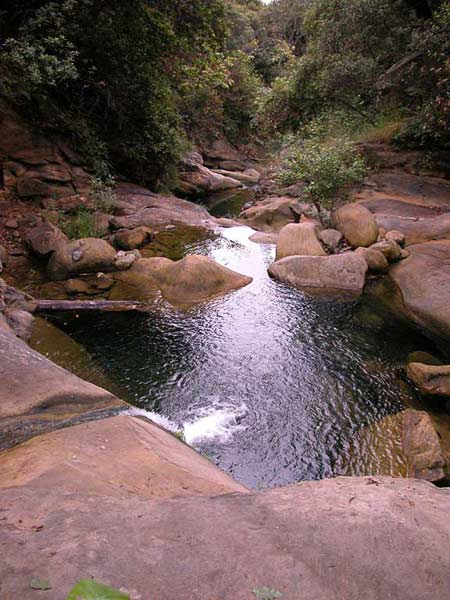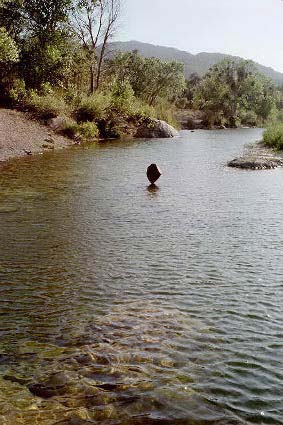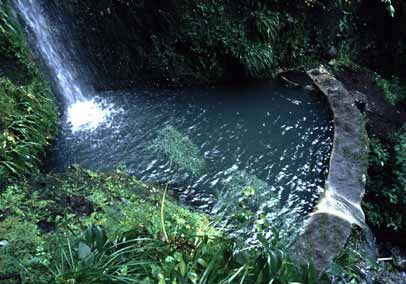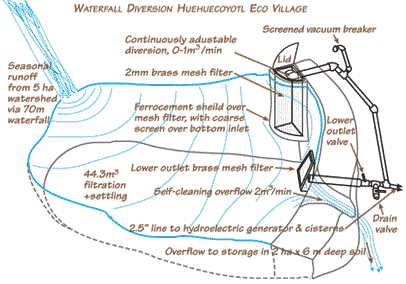| |
Understanding WaterA Deeper, Clearer Understanding of Natural Water Systems
|
On this page: |

Goals
Get out of the office/lab and join us at the creek to:
- Fill gaps in each others knowledge, identify opportunities for working together
- Deepen understanding of the intricacies of natural water systems, applicable to human-managed water systems
- Understand how human interventions ripple through interconnected water and nutrient cycles, economic and social systems
- Learn by doing a low-precision, low-cost, high-resolution snapshot of the creek's water quality change, and discuss the role this technique could play in local water quality mysteries
- Discuss how to evaluate technology options for a given context
- Enjoy each other and one of Santa Barbara's natural jewels
We see this as a step towards the development of a scientifically grounded, integrated design process for evaluating and implementing the most appropriate, sustainable infrastructure in our coastal community.
Who
By invitation to a diverse cross section of local water movers and shakers...if you'd like to nominate someone please let us know.
Please Email us an RSVP, carpool info, or questions, or call Amanda at 967-9956
When & Where
Friday March 28th 2008, 8:50am-5pm, San Jose Creek. We will meet at 8:50am at the Oasis office. It is a ten minute walk to the creek from our office, five minutes of which is on a steep trail. We'll also walk slowly up the creek a short distance.
It is important that you arrive before 9 am as we'd like to start the experience as a complete group—and besides, if you don't walk down with us you may never find us.
If the interest level warrants, we can meet again Friday April 4th, to interpret the water tests we take the 28th and follow up on anything else we wish to.
How much
Free.
(If you feel moved to donate something or can write us a check off an expense account we certainly won't turn it down)
To bring
- Paper, pencil and a clipboard.
- Bring delicious food for a potluck picnic at the creek.
- Sun protection, layers for shady cold and sunny hot (it will be shady for much of the time and sunny for midday with luck), water, bathing suit, towel.
- Seat back or whatever else you need to be comfortable sitting still on a rock and listening for a few hours at a stretch, as well as scrambling over boulders and through water a short distance.
- If you have interesting, easy-to-use water testing equipment or something else to share with the group, please Email us .
Helpful Preparation
We'll approach the topic from a wide range of perspectives: hydrologist, ecologist, microbiologist, plant physiologist, chemist, economist, business person, backpacker... If you can track across this whole spectrum you'll get the most out of it.
The more of the background info below you understand (or have been exposed to) before coming, the more you'll get out of the day. In a short time you could glance at every document.
Some of these things are pay-per-downloads from our catalog. If this would prevent you from reading them for whatever reason, please download them free from this temporary site.
 This
stuff is worth reading all the way through:
This
stuff is worth reading all the way through:
- Water testing-download
- Eco Design Principles-download: Integrating Technology, Economics and Nature
- Fecal coliform counts
- Sewers & water quality
This stuff will add more depth if you can scan or read any of it:
- Water Storage-book
- Oasis greywater-book
- Water central—any links which catch your eye.
- Green 4,000 ft2 home?
- Water test results- Maruata— Water test results from indigenous community
- Greywater policy center
- Giardia Lamblia and Giardiasis
- Study:
Saving forests best way to cheap, clean water Excerpt:
GENEVA (Reuters) -- Major cities should focus efforts and funds on conserving forests which naturally purify their drinking water, saving them from spending billions of dollars on water treatment facilities, a study published this week showed.
Agenda
This agenda can be adapted to the group's preference, in particular the amount of time spent in the water testing snapshot.
Water Awareness
Introductions
Understanding Water
- A view of the water cycle you've never heard before, with particular focus on how water quality changes as it touches the earth then moves over and through it.
- What purifies water and how
- What contaminates water and how
- Tolerances for different kinds of contamination in the water
- Some discussion of how water quality changes as it moves through engineered systems
- Sharpening your water intuition
Water Testing
- The limitations of testing
- What testing is good for and how to get the most out of it
- Low precision, high-resolution testing to show reveal the information encoded in water quality change
- What “40 coliforms per 100ml” means and how to convert this into quantities of actual fecal matter in the water
- Estimating contamination which could result from a given source
- Estimating what source could have produced a measured level of contamination
- We’ll collect a few samples, learning good technique for test design, predicting results, sample collection, pipetting, plating, incubating, counting, recording and interpreting results.
Group Directed Discussion
Topics could include, for example
- How to apply nature's example to the integrated design of human-managed water flows
- Discussion of any specific systems or contexts of interest to participants
- Discussion of community process for evaluating and implementing the most appropriate, sustainable infrastructure
  |
